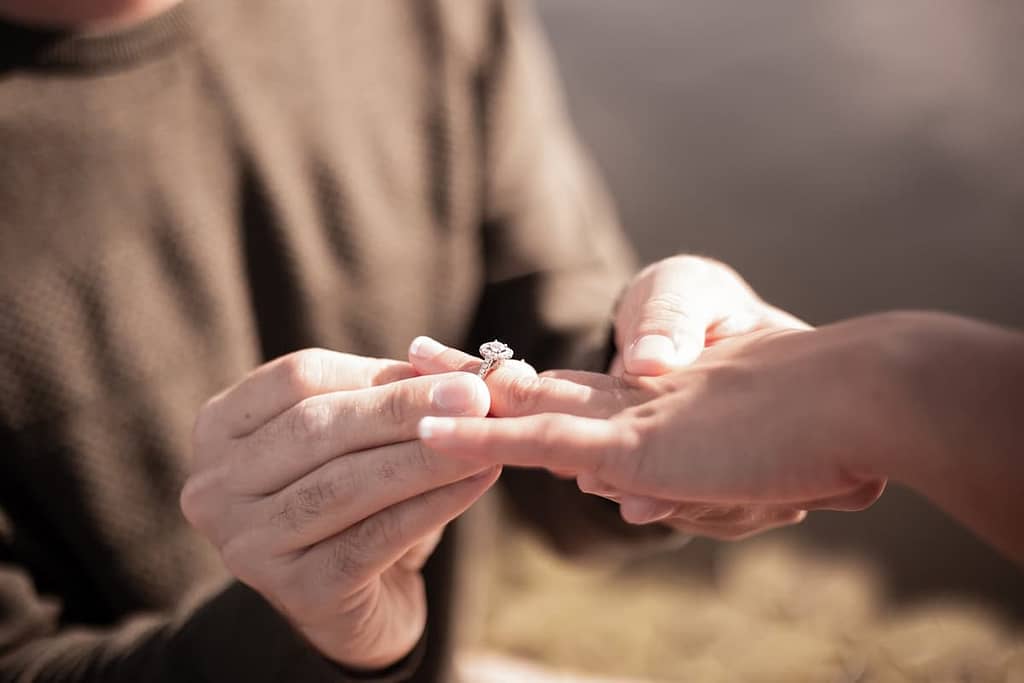Selecting the right engagement ring to propose with is a critical decision that carries immense sentimental value. This symbol of your love and commitment should reflect your partner’s personality, style, and preferences. As you embark on this exciting journey, it’s essential to consider various factors, such as the type of metal, stone, and design, to ensure your chosen ring is the perfect representation of your everlasting love.
Understanding Your Partner’s Style and Preferences
It’s essential to determine your partner’s style and preferences when choosing the perfect engagement ring. This will ensure that the ring resonates with their personality and taste, adding a personal touch to your proposal. Consider your partner’s lifestyle as well, as this can impact the choice of ring. For instance, if they lead an active lifestyle, a durable and low-profile ring design may be more suitable.
Pay close attention to your partner’s jewelry preferences and tastes. Take notes of any specific likes or dislikes they may have expressed regarding engagement rings or other jewelry pieces. Additionally, you may want to consult with their friends and family members who can provide further input about their preferences. By taking the time to understand your partner’s style and preferences, you’ll be better equipped to choose a ring they’ll truly cherish.
The ring should be as unique as your relationship. Discover how to create a Custom Engagement Ring That Tells Your Story for more personalized ring ideas.
Understanding the 4 Cs of Diamonds
When it comes to selecting the perfect engagement ring, understanding the 4 Cs of diamonds is essential. These four factors – cut, color, clarity, and carat weight – determine a diamond’s quality and value. By comprehending the nuances of each aspect, you can make an informed decision and choose a ring that suits your partner’s taste and your budget.
1. Cut: Precision in Radiance
The cut of a diamond is the craftsmanship behind its sparkle. It’s not just about the shape; it’s about how well the facets interact with light. A well-cut diamond dazzles as it reflects and refracts light, creating a breathtaking display of brilliance.
2. Color: From D to Z
Diamond color is evaluated on a scale from D (colorless) to Z (light yellow or brown). A colorless diamond is the most sought-after and valuable, as it allows for maximum light reflection and brilliance. However, the difference between color grades can be quite subtle, and personal preferences may play a significant role in the final choice. Keep in mind the metal of the ring setting, as it can either enhance or contrast with the diamond’s color.
3. Clarity: Nature’s Signature
Nature leaves its mark on diamonds through inclusions and blemishes. Clarity refers to the absence of these imperfections. Graded from Flawless to Included by the GIA, clarity enhances transparency, making each diamond uniquely exquisite.
4. Carat Weight: Balancing Act
Carat weight, though often emphasized, is just one piece of the puzzle. While size matters, the balance with cut, color, and clarity ensures a diamond’s overall allure. Finding this balance ensures your diamond not only impresses with size but also mesmerizes with brilliance.
In essence, the 4 Cs – Cut, Color, Clarity, and Carat weight – are the compass guiding you through the enchanting world of diamonds, empowering you to make a choice as timeless and unique as the love it symbolizes.

Setting and Metal Options
Choosing the perfect engagement ring involves considering both the setting and the metal. These elements contribute to the overall appearance, durability, and maintenance requirements of the ring.
Choice of Metal
Various metals are popular for engagement rings, including:
- yellow gold
- white gold
- platinum
- rose gold
Each metal offers a unique aesthetic, with yellow gold providing a classic and warm appearance, white gold and platinum giving a modern and sleek look, and rose gold offering a distinctive and romantic hue. When selecting the metal, consider your partner’s preferences, the diamond’s color, and the ring’s durability and maintenance requirements.
Engagement Ring Settings
There are numerous ring settings available, such as solitaire, halo, three-stone, and pave. Each setting style showcases the diamond or gemstone differently, affecting the overall look and feel of the ring. When choosing a setting, consider factors such as your partner’s taste, the diamond’s shape and size, and the level of protection and security the setting provides for the stone.

Ring Sizes
Determining your partner’s ring size for a proposal can be a subtle yet crucial task. Here are some discreet methods to help you figure it out:
- Borrow a Ring: “Borrow” one of your partner’s existing rings that you know fits on the intended finger. Make sure it’s a ring they wear on the same finger you plan for the engagement ring.
- Ask Friends or Family: Enlist the help of their close friends or family members who might know their ring size.
- Trace a Ring: If you can get your hands on one of their rings, trace the inside and take this outline to a jeweler. They can use it to determine the correct size.
- Guessing with Care: If you’re bold enough, take a guess based on your observations of their hands. You can always resize the ring later if needed.
Remember, it’s better to choose a slightly larger size, as resizing down is typically easier than increasing the size.
By following the advice and tips provided, you can embark on a successful proposal journey and create a memorable, meaningful moment for both you and your partner, ensuring that your proposal is truly unforgettable and reflective of your love and commitment.
